Apple Music and Tidal are well known for their exclusive releases and both streaming services have been around since 2015. In that time, Apple Music has become the most popular streaming service in the US, but Tidal has a dedicated subscriber base for a variety of reasons.

Dubbed as the artists' music platform, Tidal is owned by Jay-Z and a variety of other successful music artists, and the company makes a point of paying artists more per stream than Apple Music. But is it a better service for the average listener? Read on to learn what both have to offer.
Subscriptions and Plans
An individual Apple Music subscription costs $9.99 per month in the United States, with slight price variations in other countries and territories. Membership means you can stream Apple's music catalog, download music and videos for offline listening, and get exclusive access to new releases and exclusives, as well as a back catalog of shows broadcast on Apple's Beats 1 radio station.
Tidal also offers a $9.99 per month individual subscription, although again prices may vary in other regions. For the audiophiles out there, Tidal also offers a $19.99 per month individual subscription with lossless "High Fidelity" sound quality and high definition videos.
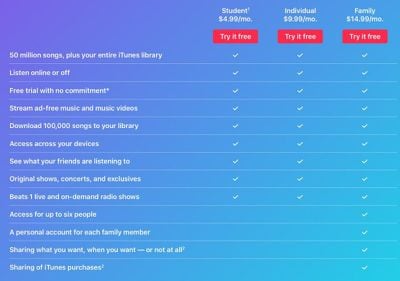
An Apple Music student subscription costs $4.99 and requires you to sign up using your educational institution credentials. Tidal offers two student plans: $4.99 for the Premium service and $9.99 for the HiFi service. Note that students need to re-verify their eligibility every 12 months for both services.
Apple Music's family plan costs $14.99 a month and allows up to six people to access the services using a personal account for each family member. Members can also share iTunes purchases amongst each other in addition to catalog content, but using the same credit card is required to verify the family status. Tidal's Family plans are $14.99 for the Premium service and $29.99 for the HiFi service. In a unique offering, Tidal also offers special individual subscription rates for active military personnel, with the Premium and HiFi plans priced at $5.99 and $11.99, respectively.
Both Apple Music and Tidal memberships automatically renew each month, but you can cancel renewal at any time and your subscription will last until the end of your current billing cycle.
Free Trials
Apple Music offers a free three-month trial of its paid service, which converts to a paid membership unless the user cancels before the trial period is over.
Tidal currently offers a shorter 30-day free trial, which also becomes a paid membership if not canceled before the trial period.
Libraries and Offline Listening
All paid Apple Music and Tidal plans give you access to a huge catalog of songs when you sign up. Apple Music boasts 50 million songs in its catalog, while Tidal subscribers get the pick of over 57 million songs, so regardless of which one has the most content, both allow you to build up a large collection of music.
In addition, Tidal also boasts over 200,000 high quality music videos, which is a more extensive catalogue than any other rival streaming service, perhaps with the exception of YouTube Music Premium, so this may appeal to you if you like to consume your music with a visual element.
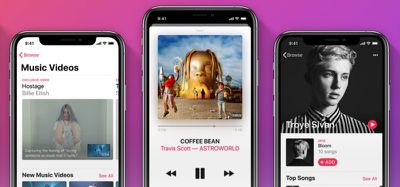
Apple Music and Tidal have battled for exclusive artist rights in recent times, so if it's important to you, Apple Music is currently first to get albums from Drake, Taylor Swift, and Pharrell Williams, while Tidal gets first dibs when it comes to Jay-Z, Beyonce, Kanye West, and Rihanna.
Apple Music users can download a maximum of 100,000 songs to their library, and thanks to Apple's iCloud Music Library feature these can be synced across devices signed in to the same Apple ID. With Tidal, you can download as many songs, albums, and playlists as you want for offline listening, and these will be synced to any device using the same account, but you can only use five devices in offline mode simultaneously.
Streaming quality
Starting in June 2021, Apple Music will support Spatial Audio and Lossless Audio, two features that are being provided to Apple Music subscribers at no additional cost. Both of these features will significantly improve the Apple Music listening experience.
Spatial Audio with Dolby Atmos will provide an immersive, multi-dimensional audio experience that allows artists to mix music in a way that makes it sound like the notes are coming from all around you. Apple has had a Spatial Audio feature available for television content, and now it is expanding to Apple Music audio content.
Apple is upgrading its entire music catalog to Lossless Audio with the ALAC (Apple Lossless Audio Codec) that preserves the details in the original audio file. Apple Music subscribers will be able to hear songs exactly as the artists recorded them in the studio.
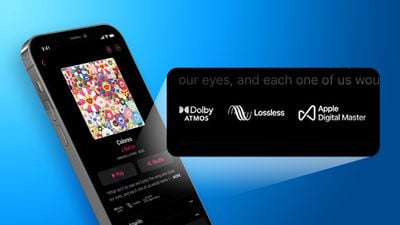
When Lossless Audio launches, 20 million songs will support the codec, with all 75 million songs available in Lossless Audio by the end of 2021.
The standard Lossless tier will start at CD quality, which is 16-bit at 44.1 kHz, and it goes up to 24 bit at 48 kHz. There's also a Hi-Res Lossless tier available at 24 bit 192 kHz, but Hi-Res Lossless requires an external digital-to-analog converter (DAC).
If you're not interested in taking advantage of lossless audio, Apple Music streams 256kbps AAC files across the board.
Historically, Tidal has catered to the audiophile more than any other music service. Tidal subscribers on both Premium and HiFi plans can choose between Normal and High quality streams.
In addition, Tidal has partnered with MQA (Master Quality Authenticated) to deliver guaranteed master-quality recordings directly from the master source, which is billed as "an audio experience that the artist intended." The rationale behind this is that while HiFi audio is a superior sound, it's still limited to 44.1 kHz / 16 bit resolution, whereas MQA audio is the highest possible resolution (typically 96 kHz / 24 bit). These MQA recordings come included with the highest tier $19.99 HiFi plan mentioned above.
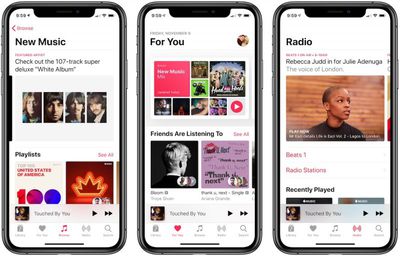
Apart from audiophiles, most listeners probably won't notice much difference between the highest-quality streams of the same song, but Tidal's option to select the bitrate can come in handy if you're worried about using up your cellular data.
Mobile, Desktop, and Web Apps
The Apple Music catalog is accessed from within the Music app, which has a clean white interface and comes pre-installed on every iPhone, iPad and iPod touch, and also is available as a separate downloadable app on Android devices. The mobile app is organized into tabs to access your music library, browse the Apple Music catalog, and listen to radio stations, while a "For You" tab lets you check out suggestions based on your listening preferences.
The Tidal app, available on both iOS and Android, has a slick black interface, but a more minimalist feel, with tabs for checking out new releases and recommendations, browsing Tidal music, searching the catalog, and accessing your music collection.
The Tidal app also includes an offline mode so that only downloaded content appears in the app, as well as helpful overlay tips for using the app the first time you launch it. By contrast, Apple's Music app isn't as easy to get familiar with, with some options hidden away in 3D Touch menus and off-screen panels that you have to swipe up or long press to access.
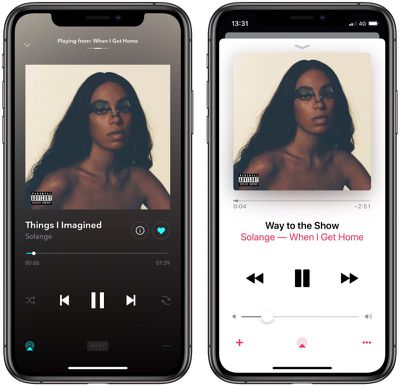
Both apps include fullscreen media players that showcase album art as you listen. These screens also put add-to-playlist, sharing, song queuing, create station, and audio device options at your fingertips.
Apple Music in iTunes (available for PC and Mac) is largely based on the same format as the mobile app, but it's not quite as pretty. It's also a little less navigable, but it does have one trick up its sleeve: Smart playlists. These can be automatically generated by iTunes based on genre, date added, loved/disliked, and so on, meaning you don't have to manually build playlists yourself if you don't want to.
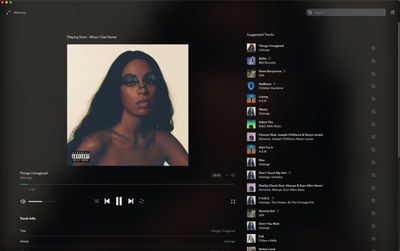
Tidal also offers apps for Mac and PC. They recreate the mobile interface for desktop well, and are slimmer and easier to navigate than iTunes, which feels bloated in comparison. In addition, Tidal offers a handy web player for accessing the service from any web browser, which is convenient if you want to access the service on a computer that doesn't have the Tidal app installed (your office PC, for example). Apple Music still lacks an equivalent, but subscribers can use a free third-party web player called Musish, although it's currently in development and still missing a few features.
Discovery Features
When you sign up for Apple Music, Apple asks you to select some of your favorite artists so that the service can get a sense of your tastes. Using this information, Apple Music populates its regularly updated For You section with new releases, daily mixes and playlists to appeal to your preferences. Playlists can take on a style (pop or jazz, for example), a particular artist, or even a particular activity like studying.
Tidal doesn't have an equivalent system to learn your music tastes immediately, although most users choose the service because it tilts towards hip hop and its sub-genres, so this isn't usually a big issue. Besides, it doesn't take long for the service to learn your preferences once you've started to add to your collection. You can also block tracks and artists from mixes and radio stations and Tidal does a good job of learning from these interactions.
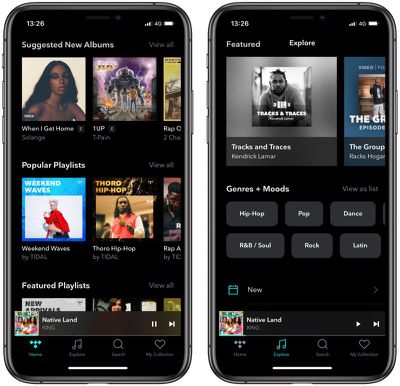
In terms of Tidal music discovery, the app's Home tab is where it's at. The Home screen showcases new arrivals in a top carousel, with suggested new tracks and albums for you below, along with popular and featured playlists/albums, top charts, video playlists, podcasts, music shows, and concerts. Home also features TIDAL Rising, dedicated to lesser-known artists from around the globe who have passionate fan bases and want to reach a wider audience with their music.
Apple Music's non-personalized content lives in a separate Browse tab showcasing trending artists and playlists, top charts, and music videos. Browse is also home to a TV and films section that features Apple-made programming like Carpool Karaoke and artist documentaries.

Apple Music's Radio tab features curated music stations tuned to your listening habits as well as Apple's Beats 1 radio station. Beats 1 offers live radio 24 hours a day, and also plays a big part in the platform's music discovery. The Radio tab also has an archive of the most popular Beats 1 radio shows and playlists from years past. Tidal doesn't have any radio programming, but it makes up for this lack with its music-focused podcast library and original music documentaries.
Music Sharing
Apple Music allows you to follow friends who are also subscribers and share playlists with them that you've personally created. Apple Music's For You tab will also show you what your friends are listening to if you've connected to them.
Tidal doesn't have native equivalent social features, but the service does allow you to connect to Facebook and so you can see tracks from friends who subscribe to Tidal. You can also share song links via text or over social media and link to last.fm to log your listening habits.
Speakers and Voice Assistants
As an Apple Music subscriber, you can use Siri as a personal DJ to control song playback, queue up songs, find song facts, add songs to your library, play your favorite playlists, or even play something new. This is a big advantage Apple Music has over Tidal, which requires a more complicated solution through Siri Shortcuts and lacks many equivalent features.
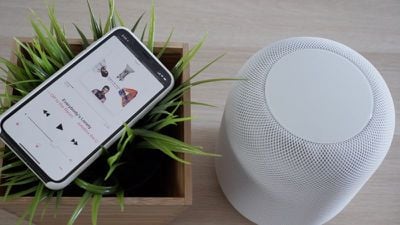
Apple's HomePod speaker is designed to be used in conjunction with Apple Music. In fact, one of the main uses for Siri on HomePod is to control your Apple Music collection. There are Siri voice commands for accessing content like playlists, genres, moods, liking or disliking songs, playing more music based on something you've heard, starting a new radio station, and much more.
None of these functions will work with a Tidal subscription. You can stream audio to HomePod from a device running the Tidal app, but that's it. On the other hand, Tidal supports Chromecast, Android TV, Sonos speakers, and Squeezebox, while Apple Music only works natively on HomePod and Amazon Echo devices.
Listening in the Car
Apple's CarPlay system supports Tidal and, of course, Apple Music. If a car doesn't have CarPlay, most newer models have their own entertainment systems, which often make it easy to connect your chosen streaming service. Usually you can do so either direct from a built-in app, over Bluetooth, or via a cable connection. You can also listen to Apple Music and Tidal through your vehicle with Android Auto.
Apple Music highlights
- Seamless integration with Apple's eco-system
- Beats live radio and archive
- Human curated recommendations
- Social features
- Support for uploading/matching your own music files
- Works natively with HomePod
Tidal highlights
- Emerging artist category
- Optional lossless plan
- Extensive video content
- Official web player
- Larger music catalog
Summing Up
Tidal holds a unique place in the streaming market, thanks to its HiFi streaming plans and its efforts to showcase emerging artists. Tidal's alignment with the hip hop scene is also a big draw, with curated playlists from the likes of Jay Z and Beyoncé. In addition, the service offers one of the largest collections of music videos, concert videos, and a good selection of original music-related programming.
On the other hand, Apple's service tends to be quicker off the mark with its music suggestions, while its content is more balanced in terms of appealing to various music tastes. Apple Music is also probably a better choice if you're invested in the Apple ecosystem. At the end of the day, both Apple Music and Tidal are solid streaming services, and which one you decide on will likely come down to your musical tastes.
























Top Rated Comments
Apple Music’s interface is shockingly bad. Really quite awful.
Tidal's interface isn't bad but, just like Spotify, they limit you to 10,000 songs (library and downloads). That is an absolute joke.
If you're just going with a handful of tracks (10 or less) per month, yes. However, if you're someone who likes discovering new music, it is less expensive to subscribe to a streaming service. Most cost the same as buying one new CD a month yet you have access to millions of tracks. I usually add, at least, 5-6 new albums to my library a month and actively listen to most songs from them. I would be spending $60 a month instead of the $5 a month for the student subscription to Apple Music. I'm going to go with the streaming service. With Apple Music, it takes me a year to spend $60. I would easily be up over $1000 a year buying CDs of all the music Apple Music has let me discover on an annual basis.